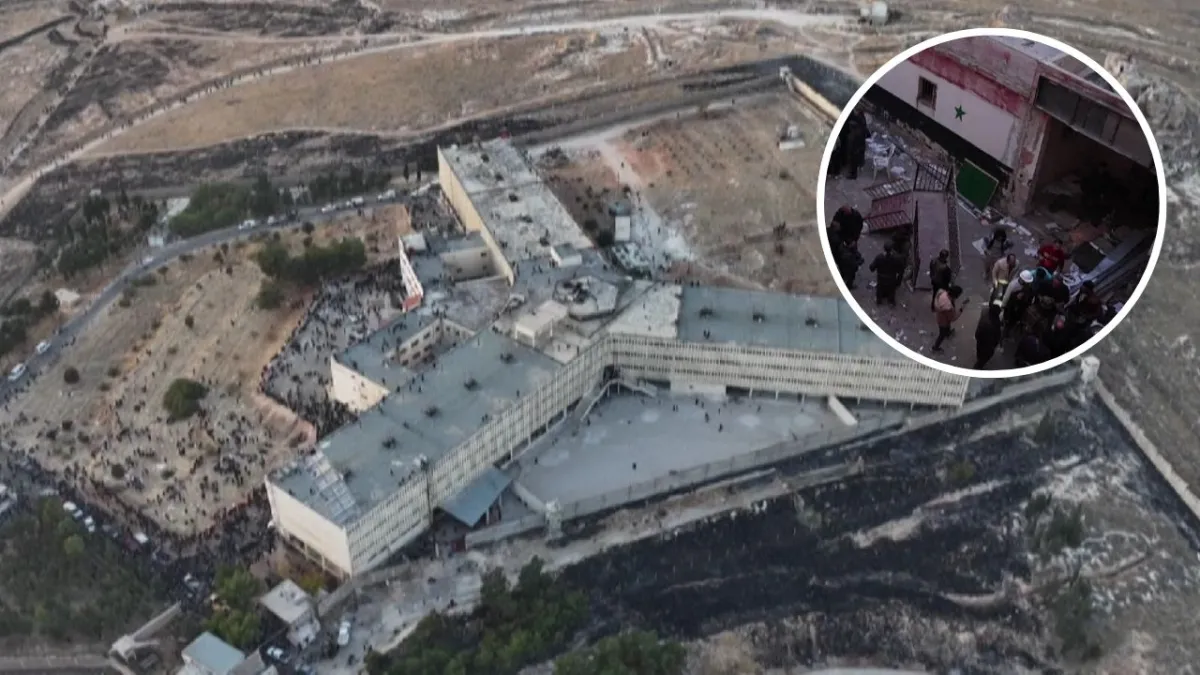
Saidnaya prison, north of Damascus, is infamous for its inhumane conditions and its central role in the violent repression carried out by the Assad clan, especially since the start of the civil war in 2011.
This penitentiary center, where numerous extrajudicial executions, torture and forced disappearances have been carried out, It symbolizes the atrocities committed by President Bashar al-Assad against his opponents.
Last Sunday, after entering Damascus, Syrian rebels announced that they took control of Saidnaya prison and released detainees, some imprisoned since the 1980s.
AFP
According to the Association of Detained and Missing Persons of Saidnaya Prison (ADMSP), more than 4,000 prisoners were released by the rebels.
The images of emaciated and disoriented prisoners, some carried by companions due to their extreme weakness, have traveled around the world, revealing the terrible conditions of this prison that Amnesty International described as a “human slaughterhouse.”
Torture and crematorium in Saidnaya prison
The prison was built in the 1980s during the rule of Hafez al-Assad, Bashar’s father.
Originally intended to house political prisoners, mainly opponents of the government, including members of Islamist groups and Kurdish activists, It became over time a symbol of the Syrian state’s ruthless control over its citizens.
In 2016, UN investigators declared that “the government is responsible for acts that constitute extermination and are tantamount to a crime against humanity,” including those committed in Saidnaya.
In 2017 Amnesty International documented thousands of prison executions, and referred to a “policy of extermination.”
Shortly after, the United States pointed out the existence of a “crematorium” used to destroy the remains of thousands of executed prisoners.
In 2022 the Syrian Observatory for Human Rights (OSDH) reported that approximately 30,000 people had been detained in Saidnaya, many subjected to extreme torture. Only 6,000 of them had been released.

AFP
Executions and makeshift morgues in Saidnaya
The ADMSP estimates that More than 30,000 prisoners were executed or died in Saidnaya between 2011 and 2018 due to torture, lack of medical care or hunger.
The association accuses the authorities of creating improvised morgues to preserve corpses with salt in the absence of cold storage rooms.
Most of the remaining detainees are officially considered missing. Families rarely receive death certificates unless pay exorbitant bribes in a widespread extortion scheme.
In 2022 the ADMSP published a report describing for the first time the “salt chambers” created in Saidnaya.
According to the report, the first salt chamber was established in 2013, one of the bloodiest years of the Syrian conflict.
Detained foreigners
The Saidnaya prison, where thousands of relatives of missing people went last Sunday in the hope of finding their loved ones in underground dungeons, It is now empty.
Many foreigners were detained in Syrian prisons, such as the Jordanian Usama Beshir Hasan al Bataynah, repatriated on Tuesday after spending 38 years in Syrian prisons. He was found in Syria “unconscious and amnesiac,” according to Haman.
According to the Arab Organization for Human Rights in Jordan (OADHJ), “the number of Jordanians detained in Syrian prisons numbering 236, most in Saidnaya, near Damascus.
A Lebanese man, Suheil Hamawi, 61, returned to his country last Monday after spending 33 years in these prisons, including Saidnaya.
Source: https://www.noticiascaracol.com/mundo/detenidos-en-prision-de-saidnaya-fueron-liberados-hubo-torturas-desapariciones-y-muertes-cb20


